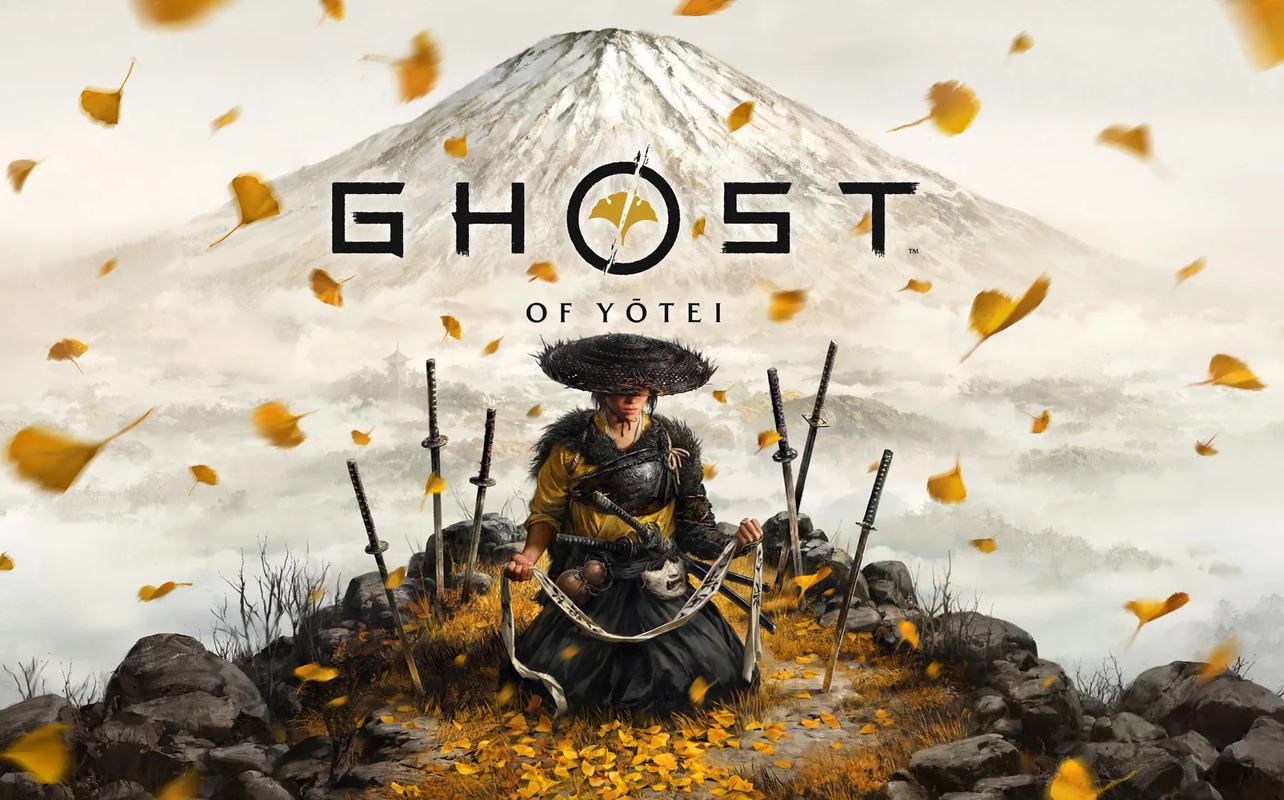
Back in 2020, Ghost of Tsushima set a new bar for open-world samurai games. Now Sucker Punch Productions is back with Ghost of Yōtei, shifting the action north to Ezo. You’re not stepping into the shoes of Jin Sakai this time—as you play Atsu—that alone sets a very different tone from the start.
Jumping into a sequel always comes with mixed feelings. You want the familiar stuff that hooked you the first time, but you don’t want it to feel like a copy-paste job either. That was on my mind with Ghost of Yōtei. Could Sucker Punch nail it again? Or would it just feel like more of the same?
I didn’t need much convincing to fire it up. The moment I saw my review code from PlayStation Canada hit my inbox, I was smiling, ready to lose a few late nights to it.
Watch our video review of Ghost of Yōtei
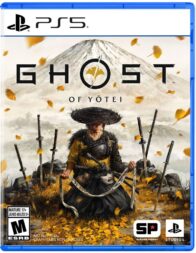
Ghost of Yōtei details
Platform(s): PlayStation 5
Developer(s): Sucker Punch Productions
Publisher(s): Sony Interactive Entertainment
Genre: Action-adventure
Modes: Single-player
ESRB Rating: M (Mature 17+)
Atsu’s Path of Vengeance
Atsu’s story wastes no time in setting the stage. Sixteen years before the main events, her family was murdered by the Yōtei Six, a ruthless group led by Lord Saitō. She was left pinned to a burning tree and somehow survived. That night shaped everything that follows. Unlike Jin Sakai, who carried the burden of honour and legacy, Atsu is hardened from the start. She isn’t searching for balance; she’s driven purely by vengeance.
Each member of the Yōtei Six feels like a looming shadow over her journey. There’s The Snake, The Oni, The Kitsune, and the rest of the Yōtei Six under Lord Saitō. Every encounter with them pushes the story forward in a way that feels personal. I liked that each one wasn’t just a name on a list. Their presence gives weight to Atsu’s revenge, making the eventual confrontations more than just boss fights.
What hit me most was how Atsu is written. She’s not an honour-bound warrior struggling with ideals, she’s a scarred survivor. There were moments where I caught myself questioning her choices, and that made me more invested. The game doesn’t shy away from asking whether vengeance just creates more loss.
The pacing, though, isn’t perfect. The first chapter stretches long, with lots of wandering before things kick into gear. Chapter two tightens up, and chapter three speeds toward the finale. The pacing shifts a lot, and sometimes it works, sometimes it doesn’t. Even with those bumps, the story kept me hooked. Atsu feels like a natural evolution for the series, and her journey has more bite than I expected. If Tsushima was about honour, Yōtei is about survival, and that difference makes all the impact.
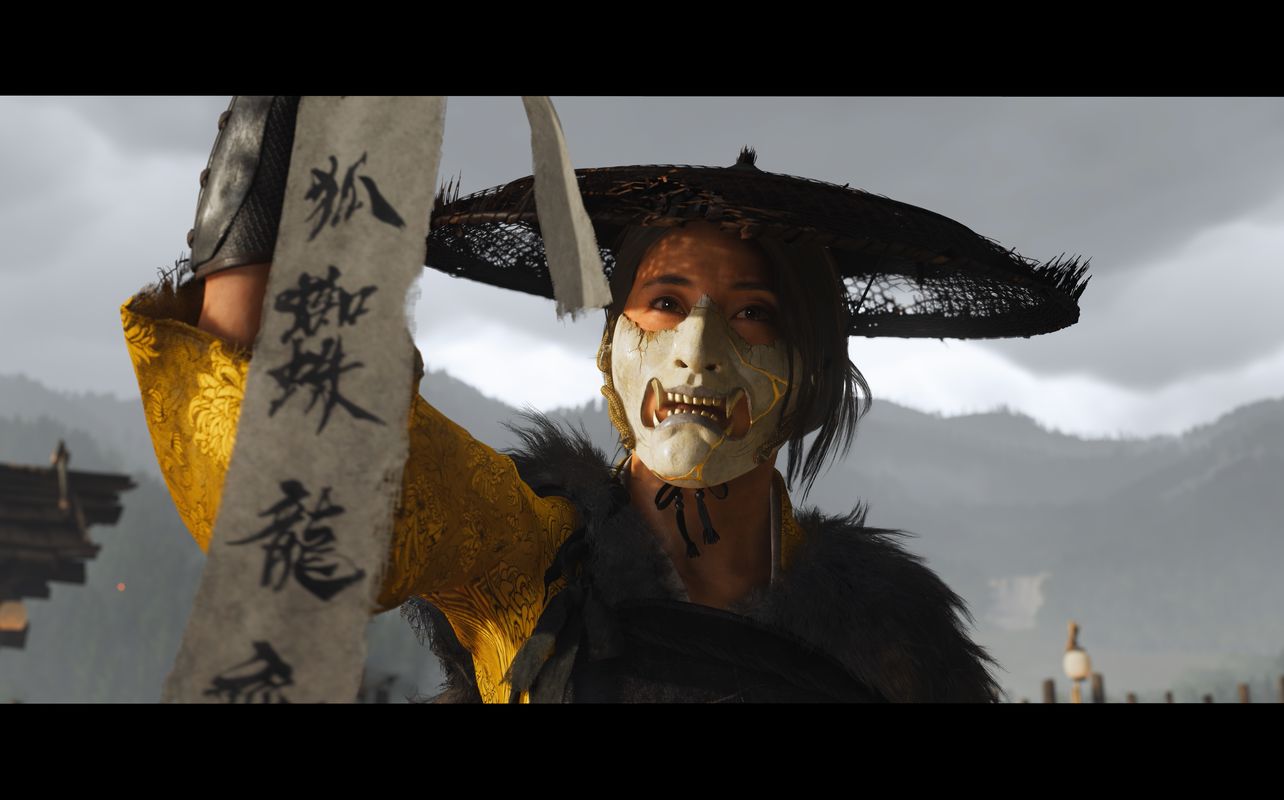
Blades, bounties, and discovery
Combat in Ghost of Yōtei builds on what Tsushima started but pushes it further. Instead of switching stances, Atsu has entire weapon sets to master. The Odachi delivers heavy, crushing blows but leaves you open if you mistime an attack. The Yari spear offers reach, perfect for keeping dual-wielding enemies at bay. The Kusarigama is my favourite, its chained sickle giving you crowd control and tricky spacing options. Dual blades keep things quick and relentless, while bows handle both close and long-range shots. Add in the rifle, kunai, bombs, and consumables like smoke and blinding powder, and there’s always another tool to try.
I ran into one bounty that didn’t go as planned. I spotted the target through the spyglass, closed in, and got disarmed almost instantly. Scrambling to grab my katana back while dodging a spear swing turned the fight into chaos. It was the kind of messy skirmish that reminds you how quickly things can fall apart if you slip up.
Exploration has its own rhythm. The spyglass helps you discover shrines, camps, and hidden locations without constantly checking the map. Leads picked up from locals and inns guide you toward objectives, though they sometimes feel redundant when multiple paths point to the same target. Side activities like sumi-e painting and playing songs on the shamisen give a quiet break from battle, while bamboo strikes, hot springs, and bounty hunts round things out.
The balance works well, though a few cracks show. Some combat animations repeat often enough to notice, and the rumour system occasionally clutters progression instead of streamlining it. Even so, the mix of exploration and combat stayed rewarding. I kept experimenting with weapons, bonding with the wolf companion, and chasing down leads across Ezo. There’s always something worth doing.
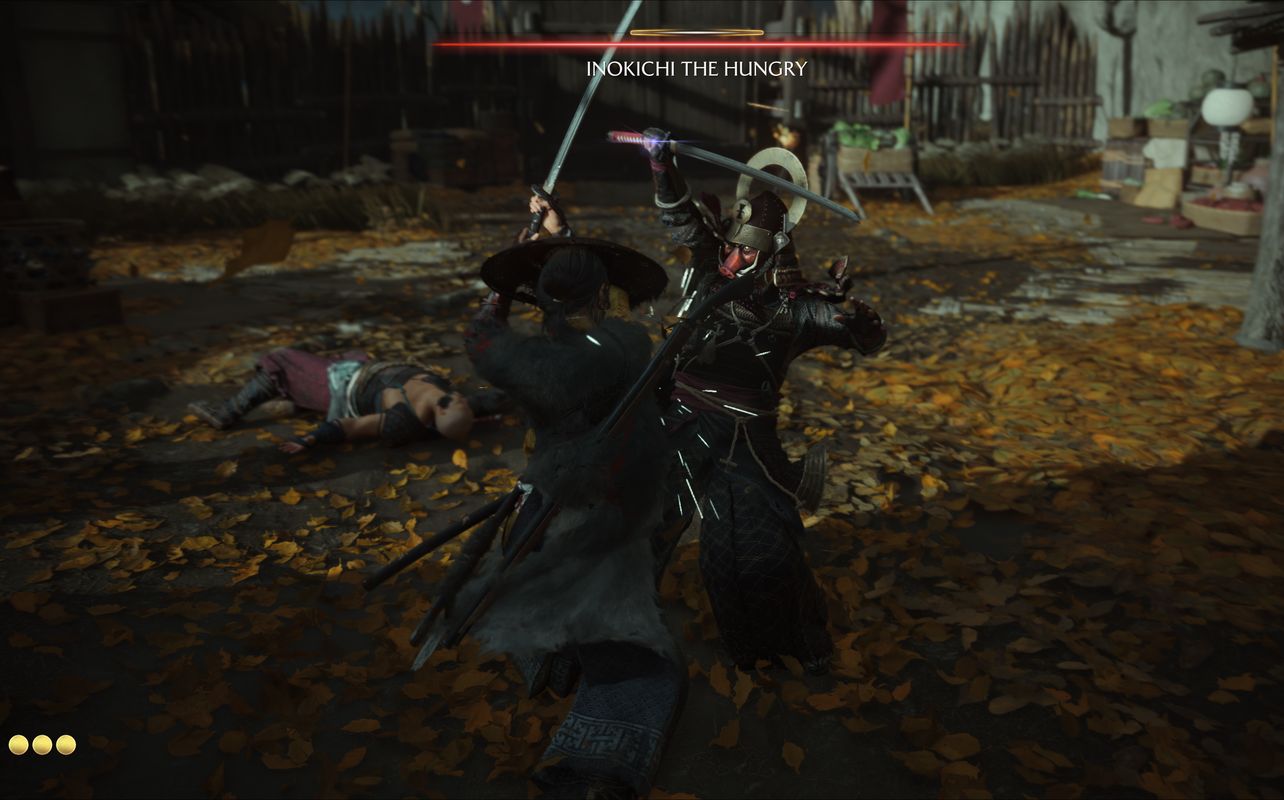
A living, breathing Ezo
On the technical side, Ghost of Yōtei makes the most of the PS5 hardware. You can choose between fidelity mode, which pushes higher resolution and detail at 30 frames per second, or performance mode, which locks the game to 60 frames with smoother motion. I spent most of my time in performance mode and never noticed a drop. Load times are almost nonexistent thanks to the SSD, making fast travel as quick as a button press.
The environments themselves are packed with detail. Weather rolls across the land, lighting shifts dynamically, and particle effects add texture to battles and exploration. Wandering through Ezo, I kept noticing little touches: the way grass moved in the wind, the flicker of firelight in a village, even the crunch of snow underfoot. These small details build a world that feels alive without needing constant reminders of how technically advanced it is.
Audio pulls its weight too. Weapon clashes with sharp sound, footsteps change depending on the surface, and storms echo with weight. The Japanese dub finally syncs properly with lip animations, making conversations feel more natural. The soundtrack blends traditional instruments with some unexpected flourishes, including a lo-fi beats option that sets a relaxed mood when you’re roaming the map.
The DualSense adds another layer. You trace strokes on the touchpad for sumi-e painting, pluck shamisen notes with subtle haptics, and feel resistance when forging weapons or lighting a fire. Memory flashbacks stand out as well, letting you move seamlessly between past and present by holding the touchpad.
Voice acting deserves a special mention. Erika Ishii brings Atsu to life with a raw, grounded performance that stuck with me long after sessions ended. Not everything is perfect. NPC animations sometimes clip or move awkwardly. Overall, presentation is one of Yōtei’s strongest suits.
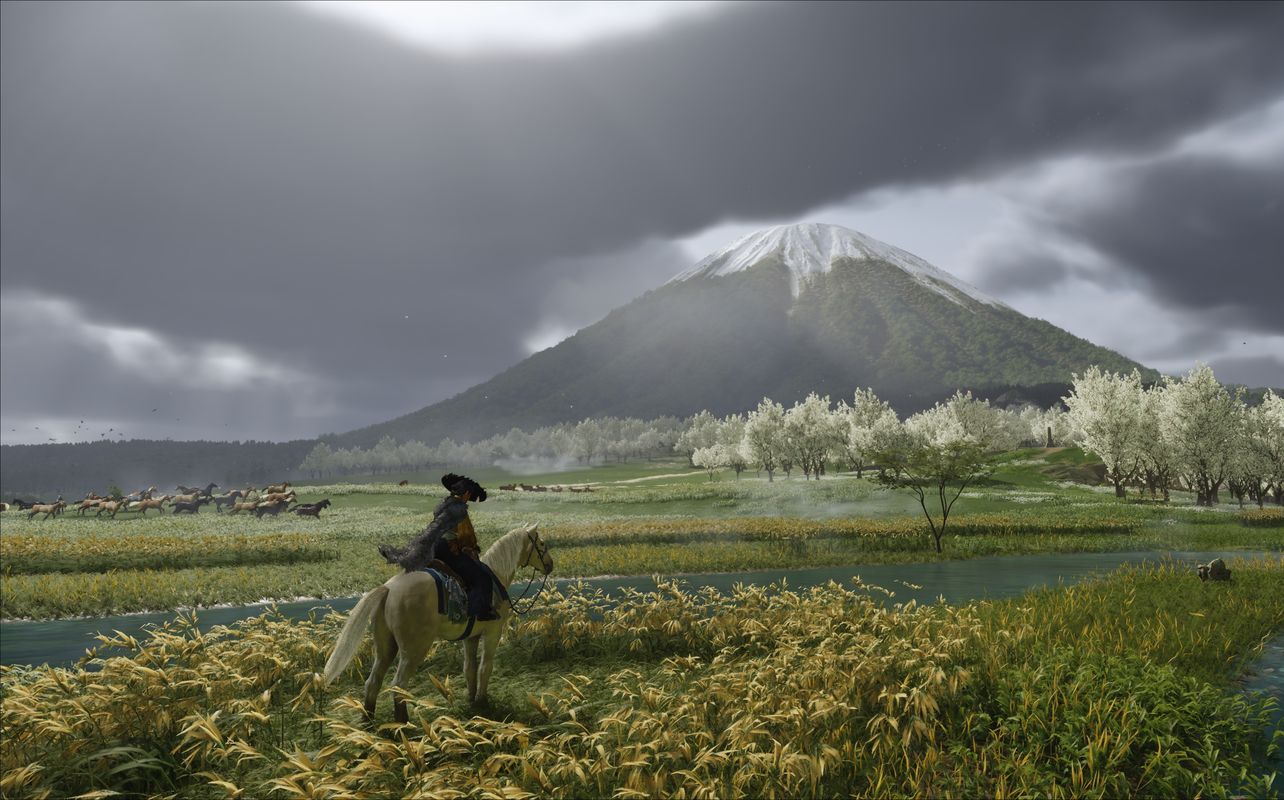
Ghost of Yōtei delivers a ruthless but rewarding journey
Ghost of Yōtei doesn’t shy away from the weight of its themes, and that gives it a different feel compared to Tsushima. The revenge-driven story, the expanded combat system, and the focus on discovery all come together to make a sequel that feels ambitious without losing the heart of what worked before.
What stuck with me most was Atsu herself. Her journey hit harder than Jin Sakai’s ever did. Where Jin wrestled with honour and duty, Atsu is defined by trauma and survival. Seeing how far she was willing to go made me stop and think more than once. That edge in her story carried through the entire experience, making it one of the strongest reasons to see Yōtei through.
The gameplay matches that tone with a variety of weapons that feel distinct and rewarding to master. Exploration and side activities help the world feel alive, giving space between the heavier story beats. Even small touches like the wolf companion add personality. It isn’t flawless though. Story pacing feels uneven, animations repeat, and NPCs sometimes move awkwardly. The rumour system also adds more clutter than clarity at times.
| Pros | Cons |
|---|---|
| Atsu’s revenge-driven story feels raw and more impactful than Jin Sakai’s. | Story pacing feels uneven across its three chapters. |
| Combat offers real variety with distinct weapon sets to master. | Some combat animations become repetitive over time. |
| Exploration stays rewarding with the spyglass, rumours, and diverse side activities. | |
| Erika Ishii’s voice acting delivers a powerful and memorable performance as Atsu. |
Overall assessment of Ghost of Yōtei
Gameplay: 4.5/5
Graphics: 5/5
Sound: 5/5
Lasting appeal/Replayability: 4.5/5
Overall rating: 4.8/5 (96%)
Still, the good far outweighs the rough spots. Whether you’re experimenting with combat, exploring shrines, or just soaking in the atmosphere, there’s always something pulling you forward. Ghost of Yōtei doesn’t replace Tsushima, but it stands firmly on its own with a voice that’s sharper and more personal. If you’ve been waiting for a reason to return to Sucker Punch’s vision of samurai Japan, this game makes a strong case.





